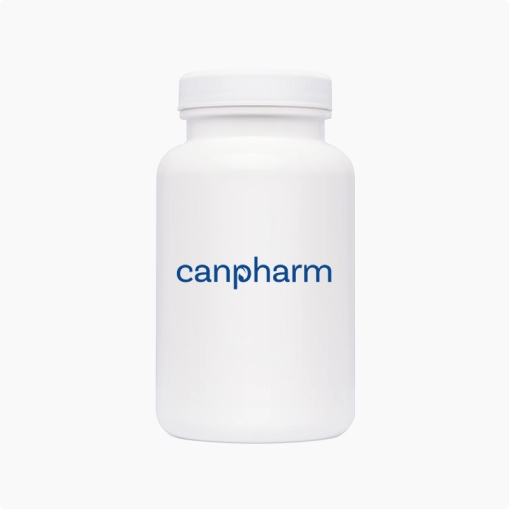-
Description
-
Reviews (0)
-
Related Products
-
Related Conditions
Fact Table
| Fact Table | |
|---|---|
| Formula | C15H13NO3·C4H11NO3 |
| License | FDA approved |
| Bioavailability | 80%–100% |
| Legal status | Prescription Drugs |
| Chemical Name | (±)-5-Benzoyl-2,3-dihydro-1H-pyrrolizine-1-carboxylic acid compound with 2-amino-2-(hydroxymethyl)propane-1,3-diol (1:1) |
| Elimination half-life | 4-6 hours |
| Dosage (Strength) | 10mg, 15mg, 30mg |
| Pregnancy | Not recommended |
| Brands | Toradol |
| Protein binding | 99% |
| PubChem CID | 3826 |
| MedlinePlus | a693000 |
| ChEBI | 6120 |
| ATC code | M01AB15 |
| DrugBank | DB00465 |
| KEGG | D00540 |
| Routes of administration | Oral, Intravenous, Intramuscular |
Ketorolac is a prescription NSAID pain reliever medication used for short-term treatment of moderate pain in adults. It is commonly prescribed for instances of pain resulting from trauma or surgery, and it is designed for situational pain relief where it is necessary for the person to continue with daily activities over what will be a relatively short recovery time. The active ingredient in this medication – Tromethamine – is a non-steroidal anti inflammatory drug that blocks the production of natural substances in the body that promote inflammation. You can buy Ketorolac from Canpharm.
Directions
The standard Ketorolac dosage is to take one Ketorolac 10mg tablet every 4 to 6 hours with a full glass (8oz) of water. Dosage may vary based on medical condition and response to treatment and you should always take your medication exactly as indicated in your prescription.
Ingredients
The active ingredient in Ketorolac is Tromethamine
Cautions
Let your doctor know of any history of asthma, bleeding or clotting problems, blood disorders like anemia, heart disease or heart attack, high blood pressure, liver disease, nasal polyps, intestinal bleeding, heartburn, ulcers, stroke, or swelling of the ankles, feet, or hands (edema) before getting a prescription and proceeding to buy Ketorolac online
It is important to avoid dehydration when you are taking this medication
Medication use may make you dizzy or drowsy, and you may want to avoid activities like driving or operating machinery while you are on this painkiller medication
Medication use may cause temporary stomach or intestinal bleeding
Ketorolac is not suitable for treatment of long-term, chronic, or acute pain with conditions like arthritis
Medication use may increase photosensitivity and it is best to use increased sun protection during treatment
Older adults may be susceptible to Ketorolac side effects
Women who are pregnant or breastfeeding should only use this medication if their doctors approves it
Interactions
Negative drug interactions may occur between Ketorolac and other Rx medications, including aliskiren, captopril, lisinopril, losartan, valsartan, lithium, methotrexate, probenecid, prednisone, cidofovir, furosemide, clopidogrel, dabigatran, and warfarin. Let your doctor know of all medications you are currently taking before getting a prescription and proceeding to buy Ketorolac online.
Side Effects
Ketorolac side effects may occur, and some users may have upset stomach, nausea, vomiting, constipation, diarrhea, gas, dizziness, or drowsiness. If side effects are seen you may want to stop use and talk to a doctor again regarding short-term pain reliever medication alternatives.
Frequently Asked Questions about Ketorolac
What is Ketorolac used for?
Ketorolac is a nonsteroidal anti-inflammatory drug (NSAID) used to relieve moderate to severe pain, typically after surgery. It is not prescribed for minor or long-term pain and is usually only used for short durations (typically 5 days or less).
How does Ketorolac work?
Ketorolac works by reducing the production of prostaglandins, chemicals in the body that cause inflammation, pain, and fever. By inhibiting prostaglandins, it helps to alleviate pain and reduce inflammation.
What are the common side effects of Ketorolac?
Common side effects include:
- Stomach pain
- Nausea or vomiting
- Dizziness or drowsiness
- Headache
- Indigestion
Serious side effects can include stomach ulcers, bleeding, kidney issues, and increased blood pressure. Always notify a healthcare provider if any severe or unusual symptoms occur.
Who should avoid using Ketorolac?
Ketorolac should generally be avoided by people with:
- A history of stomach ulcers, bleeding, or gastrointestinal issues
- Kidney disease or reduced kidney function
- Certain bleeding disorders
- Recent or upcoming surgery, especially coronary artery bypass graft (CABG)
- Allergies to NSAIDs or aspirin
Pregnant women in their third trimester should not use Ketorolac due to potential harm to the fetus.
Can I take Ketorolac with other medications?
Ketorolac should not be combined with other NSAIDs (such as ibuprofen or aspirin) or blood-thinning medications without medical advice, as it may increase the risk of bleeding. It is important to inform your healthcare provider of all medications and supplements you are taking.
How is Ketorolac typically administered?
Ketorolac is available in several forms: oral tablets, intramuscular or intravenous injections, and sometimes as an eye drop. The method and dosage depend on medical advice, often beginning with an injection in a hospital setting, followed by oral doses for a few days.
What should I do if I miss a dose?
If prescribed on a regular schedule, take the missed dose as soon as you remember, but if it’s close to the time for your next dose, skip it. Do not double up on doses to make up for a missed one.
What are the risks of using Ketorolac long-term?
Long-term use of Ketorolac is associated with serious side effects, including gastrointestinal bleeding, ulcers, kidney damage, and cardiovascular issues. Because of these risks, Ketorolac is usually prescribed for short-term use only (up to 5 days).
Can I drink alcohol while taking Ketorolac?
It is advised to avoid alcohol while taking Ketorolac, as alcohol can increase the risk of stomach bleeding and gastrointestinal side effects associated with NSAIDs.

